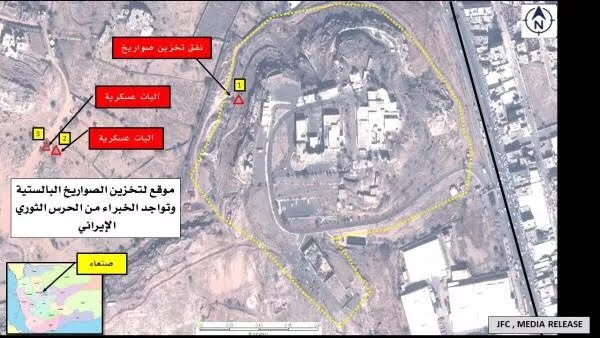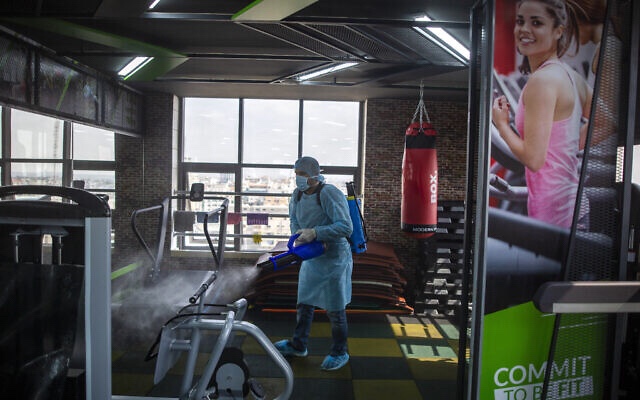By AgenciesToday, 11:44 am
When Nima Amraa returned to the Gaza Strip from neighboring Egypt earlier this month, she was surprised to learn she was being placed in a makeshift quarantine center set up by the ruling Hamas terror group.
But her initial jitters turned to fear when two fellow travelers in another facility tested positive for the coronavirus — the first cases to be confirmed in Gaza.
“Once there were cases of the virus spreading, we started to feel afraid and disappointed,” Amraa, a 30-year-old journalist, said by phone from quarantine, where she has spent a week and a half sleeping in a room with five other women and sharing a bathroom.
In the meantime, Hamas is racing to build two massive quarantine facilities — hoping to prevent the disease from spreading and overwhelming Gaza’s already shattered health system.
The construction was ordered after photos surfaced from makeshift centers — mostly schools — showing people celebrating birthday parties with visiting relatives, food being delivered by volunteers and groups of people smoking water pipes together.
A Palestinian health worker sprays disinfectant as a precaution against the coronavirus in a gymnasium in Gaza City, March 15, 2020. (Khalil Hamra/AP)
Amraa said it was immediately clear that the school where she was placed was not prepared to house so many people.
“I was worried after seeing that we will sleep on mattresses on the floor and we will be six in one room,” she explained. “We eat together and there is no isolation.”
She said she and her roommates take precautions, such as avoiding direct contact and keeping their beds two meters apart from each other. But that might not be enough to keep the virus from spreading. Last week, seven Hamas security guards who were in the facility housing the first two cases became infected themselves.
“We have been very clear on how the quarantine facilities should look like and offer in terms of facilities and services and support,” said Dr. Gerald Rockenschaub, the World Health Organization’s director in the Palestinian territories. “But this is obviously easier said than done in Gaza, where there is substantial shortage in almost everything.”
Dr. Gerald Rockenschaub, the World Health Organization director in the Palestinian territories, (L), listens to Palestinian doctors during a tour of the Limb Reconstruction Center at Nasser Hospital in Khan Younis City, southern Gaza Strip, March 5, 2020. (Adel Hana/AP)
Although movement in and out of Gaza has been heavily restricted since 2007, it is not cut off altogether. The first two virus cases were men who had returned from a religious conference in Pakistan, part of a wave of hundreds of returnees who were placed into quarantine.
No one knows how much farther the virus has spread. Only 20 percent of the roughly 1,700 people in quarantine have been tested.
Gaza’s people live mainly in densely populated cities and refugee camps. The health care system is in shambles — a result of the blockade, three wars between Hamas and Israel and chronic under-funding due to infighting between Hamas and the rival Palestinian Authority in the West Bank.
Gaza has only 60 breathing machines — and all but 15 are already in use, according to the WHO. The agency has been assisting local health officials and has been working with Israeli authorities, who have no direct contact with Hamas, to import desperately needed equipment and supplies from international donors.
Most people infected by the virus experience only mild symptoms, such as fever and cough, and recover within a few weeks. But the virus can cause severe illness and death, particularly in older patients or those with underlying health problems. High rates of obesity, smoking and stress-related disorders appear to make Gaza’s population especially vulnerable.
Members of the Palestinian Islamic Jihad terror group’s armed wing, the Al-Quds Brigades, spray disinfectant in the streets of Rafah in the southern Gaza Strip, during a campaign aimed at slowing down the spread of the novel coronavirus, March 26, 2020. (Abed Rahim Khatib/Flash90)
Hamas has sought to beef up its quarantine efforts in recent days, opening 18 additional facilities in clinics and hotels and declaring them off-limits. It also has banned weekly street markets and shut down wedding halls, cafes and mosques and extended quarantine periods by a week.
After seeing images of the makeshift facilities, Hamas’s leader in Gaza, Yahya Sinwar, ordered the group’s military wing to build two new quarantine centers.
Situated on the territory’s northern and southern borders, they will be able to hold 1,000 people. The group expects them to be ready within a week.
The public seems to have been calmed by Health Ministry claims that all virus patients are held in quarantine centers. Despite the shutdown orders, people still walk the streets and congregate around small coffee kiosks and noodle shops.
That could change if cases begin to spread.
Last Friday, the crew for a Turkish TV station caused a panic after entering the field hospital where the nine infected people are being treated. The crew subsequently left the facility and broadcast a report the next day.
Hamas quickly put the crew members into quarantine and suspended the head of its media office for allowing them access to the facility.
Elsewhere, people still held wedding parties in their homes after wedding halls closed.
Dr. Yahia Abed, an epidemiologist, said the public’s apparent lack of commitment to safety precautions is worrisome and that anyone who might have been exposed to the virus must go into full and enforceable isolation.
“If, God forbid, people hid the fact that they had contact with the infected, this will be very dangerous for an area like Gaza. The epidemic will spread,” said Abed, a public health professor at Al-Quds university near Jerusalem.
Workers wearing protective gear spray disinfectant as a precaution against the coronavirus, at the main market in Gaza City, March 19, 2020. (Adel Hana/AP)
One factor in the small number of cases so far could be the lack of testing.
COGAT, the Israeli defense body responsible for Palestinian civilian issues, said it has coordinated the delivery of hundreds of coronavirus testing kits by the World Health Organization, as well as protective equipment, medicine and disinfectant.
Israel, along with most Western nations, considers Hamas a terrorist group. But it likely fears the fallout from a catastrophic outbreak would spill over the frontier.
Qatar, which provides extensive humanitarian aid to Gaza, has also stepped in, pledging $150 million in aid and providing furniture, clothes and electrical appliances for the quarantine centers.
The Gaza Health Ministry says it urgently needs more than $20 million to stave off the collapse of the health system if there is a major outbreak.
Rockenschaub said there’s still time to improve quarantine procedures in Gaza. “The issue is to move quickly and mobilize support to get them on the way to meet the right international standards,” he said.
 The Ramapo fault and other New York City area faults
The Ramapo fault and other New York City area faults 












